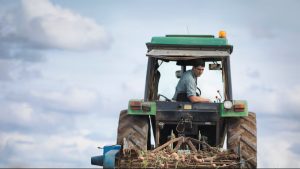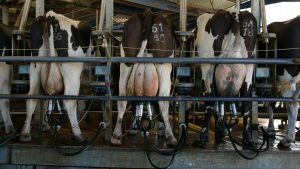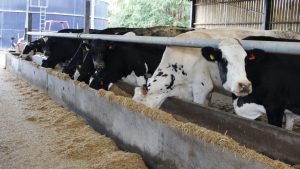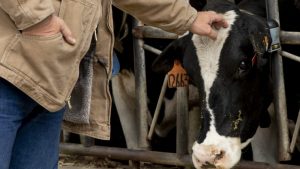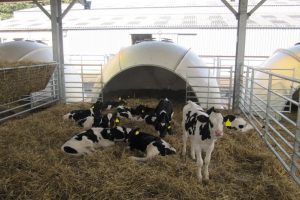
Mastitis had hardly ever been a problem in Jeffrey and Elinor Evans’ dairy herd but in August 2020 the infection level in nine cows was so severe that they had to exit the herd.
This prompted a major rethink of milking protocols and the results have been dramatic – there have only been five cases per 100 cows in 2022 compared to the average rate of 32/100 in a typical 200-cow UK herd.
The Evanses and their team of relief milkers at Broadmoor Farm, Wolfscastle, previously had a policy of dry wiping teats as cows entered the parlour and post-dipping with iodine.
Mr Evans now believes that this had not been the best way of protecting teat condition.
“The teats and teat ends would get dry and chapped in windy and sunny weather,’’ he says.
When nine cows succumbed to very severe cases of mastitis in a single month, every aspect of cow management was scrutinised, including milking protocols.
New procedures were introduced, with an iodine-free teat foam applied before and after milking.
Mr Evans says within days he noticed an exceptional improvement in teat condition.
“The teats quickly became softer and smoother.
“We have kept that up and we have never had a problem with teat condition, or high levels of mastitis, since.’’
Cell counts are currently averaging 105,000 cells/ml, often dipping under 100,000 when cows are at grass, and the Bactoscan is 16.
The 220-cow Jersey-cross and Friesian-cross herd is milked in a 12/24 swingover parlour and a feature of this, a dual vacuum level system, also prevents teat end damage, says Mr Evans.
“We don’t have ACRs or backflush but as soon as the cow stops milking the vacuum level drops.’’
Cluster liners are changed three times a year, in March, June and September.
“That is something we are very particular with,’’ says Mr Evans.
He shares the milking with two relief milkers, both farmers who share his vision for cow health and performance. He mostly milks in the morning and they take care of the afternoon shift.
The business runs a spring calving system with the target of getting calving underway on March 1.
For the last two years, sexed semen has been used with great success on the heifers and the first and second calvers for the first cycle – of the 180 black and white calves born last year, 120 were females. The bull calves were sold at Whitland mart.
Oestrus is synchronised in the heifers to help with the management of breeding as the heifers are housed away from the main farm – it means that artificial insemination can be completed within a week.
They are served at 15 months at an average of 300kg – all AI is done by Mr Evans.
Sexed semen has had no negative impact on the calving pattern or empty rate, which averages 5-7% but has been as low as 3%.
Mr Evans also credits vaccinating against IBR for that low empty rate – prior to inoculation in 2012 the empty rate had been running at around 20%. The herd is vaccinated twice, pre-mating and again in November, before housing.
To maintain the tight calving block any animal with Johne’s leaves the herd. As a First Milk supplier, the Evans’ were encouraged to have a Johne’s testing programme in place.
Blood testing revealed three cows in the herd with the disease and these were removed. “If we hadn’t tested we would have missed them because they had no physical signs,’’ says Mr Evans.
The herd has a two month dry period, from December 30. Antibiotic tubes are still currently used at drying off but apart from this treatment antibiotic usage across the 400 animals on the farm is very low.
Mr Evans says a reason why he still favours this approach at drying off is because constraints with sheds mean that some cows have to be winter housed in loose housing.
But the majority of cows are housed in cubicles, on mats topped with sawdust.






